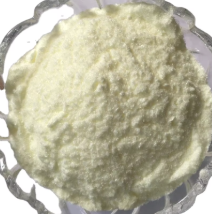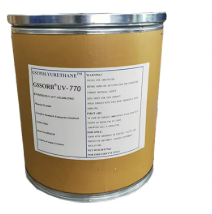LED 솔루션 도입 시 주요 고려사항 PVC 안정제 선택
열 저항 요구 사항 이해하기
적절한 PVC 안정제를 선택하는 것은 결국 열에 대한 저항성을 얼마나 잘 갖추고 있는지를 아는 데 달려 있습니다. 결국, 우리는 혹독한 환경 조건에 직면했을 때 분해되지 않는 소재를 필요로 합니다. 자동차 및 건설 분야는 시간이 지남에 따라 PVC가 많은 열에 노출되는 대표적인 예입니다. 여름철 햇볕에 달궈진 자동차 내부이나 끊임없이 햇빛에 노출된 건축 자재를 생각해보세요. PVC 제품이 수명 주기 동안 견뎌야 할 온도 범위를 정확히 아는 것은 조건이 열악해질 때까지도 제품을 안정적으로 유지할 수 있는 적합한 안정제를 찾는 데 큰 차이를 만듭니다. 방향이 필요하신가요? ASTM(American Society for Testing and Materials)에서 제시한 가이드라인을 참고해 보세요. 이 단체에서는 다양한 응용 분야에서 PVC 소재의 내열성을 측정하기 위한 명확한 기준을 제시하고 있습니다.
환경적 노출 요인 평가
PVC 안정제가 어떤 환경 조건을 견뎌야 하는지를 살펴보는 것은 장기적인 성능과 지속 가능성 측면에서 매우 중요합니다. 햇빛 노출, 습도 수준, 다양한 화학물질과의 접촉 등은 안정제의 실제 효과에 영향을 미치는 요소들입니다. 이러한 요인들의 작용 시간과 강도에 대한 구체적인 수치를 파악하는 것이 합리적입니다. 이는 현장 연구 결과를 검토하거나 제조업체가 자체적으로 문서화한 자료를 참고함으로써 가능합니다. 평가 시 특히 자외선 차단 능력 및 다양한 화학물질에 대한 저항성에 주목해야 합니다. 이를 통해 실제 사용 환경에서 노화에 의한 분해를 효과적으로 방지하는 안정제를 선택할 수 있습니다.
하중 지지 응용 프로그램 결정하기
하중 또는 압력을 지탱하기 위한 PVC 소재를 다룰 때는 올바른 안정제를 선택하는 것이 장기적인 성능에 큰 차이를 만듭니다. 먼저 해당 제품이 실제 사용 환경에서 어떤 종류의 힘을 받게 될지를 파악하는 것이 중요합니다. 이러한 정보는 제조사가 소재가 스트레스를 받을 때 변형되거나 파손되지 않는 안정제를 선택할 수 있도록 안내합니다. 인장 시험의 실험실 결과와 유사한 산업 분야의 사례 연구를 함께 살펴보면, 특정 안정제가 요구가 높은 상황에서 실제로 효과적인지를 보다 명확히 판단할 수 있습니다. 이렇게 올바른 선택을 한다면 제품이 출시 초기부터 더 우수한 성능을 발휘하고 전반적으로 내구성도 높아집니다. 무엇보다도, 중량 부하용으로 특별히 제형된 안정제 대신 일반적인 안정제를 사용할 경우 발생할 수 있는 비용이 많이 드는 고장 사태를 피할 수 있습니다.
안정제 조성물 비교
친환경 솔루션을 위한 칼슘-아연(Ca-Zn) 안정제
최근 칼슘-아연 또는 Ca-Zn 계열의 안정제가 주목받고 있는데, 이러한 화합물은 독성 물질을 포함하지 않을 뿐만 아니라 환경과의 친화성도 우수하기 때문이다. 제조업체들은 납 기반의 위험한 대안 제품들에서 이러한 보다 안전한 옵션으로 전환하기 시작했다. 최신 연구 결과를 살펴보면 기업들이 이러한 전환을 단행하는 이유를 쉽게 알 수 있다. 이 안정제는 현대의 친환경 기준에 부합할 뿐 아니라 전반적으로 오염 문제를 줄이는 데 기여한다. 예를 들어 PVC 전기 케이블이나 다양한 유연 소재에 적용되는 방식을 보면, 이 안정제는 생산 과정에서 제품의 안정성을 유지하면서도 기존의 납 성분이 포함된 공식에서 오는 건강상의 위험을 피할 수 있다. 많은 공장에서는 이 안정제로 전환한 이후 작업장 안전 기록이 개선되었다는 보고도 있다.
열 안정성을 위한 바륨-아연(Ba-Zn) 안정제
바륨 아연 또는 Ba-Zn 안정제는 PVC 제품에서 열 관리 성능이 뛰어나 주목받고 있습니다. 대부분의 산업 연구에서는 과도한 열 노출로 인해 분해가 시작될 때, 이러한 안정제가 다른 대체 물질에 비해 더 우수한 성능을 보이는 것으로 나타났습니다. 이 화합물은 고온으로 인한 손상으로부터 소재를 실제로 보호해주기 때문에 제조업체들이 전기 케이블 피복재나 요즘 흔히 볼 수 있는 유연한 재질의 바닥 매트 등에 선호해서 사용합니다. 하지만 좋은 결과를 얻기 위해서는 가공 조건에 주의 깊게 관리해야 합니다. 제조 과정 중 온도 조절과 같은 요소들이 Ba-Zn 공식의 최상의 효과를 이끌어내는 데 결정적인 차이를 만듭니다.
저독성 준수를 위한 유기 안정제
유기 안정제는 특히 식품 포장재료와 같은 저독성이 중요한 상황에서 매우 중요한 역할을 합니다. 이러한 물질들은 민감한 환경에서의 사용을 뒷받침하는 다양한 산업 규격을 충족합니다. 제조업체가 유기 안정제를 선택할 때는 일반적으로 효과성과 안전성 사이에서 타협해야 하는 경우가 많습니다. 대부분의 옵션들은 효과적인 수준을 유지하면서도 환경적 우려를 어느 정도 통제할 수 있는 균형점을 찾고 있습니다. 예를 들어 에폭시화 대두유를 살펴보면, 이 물질은 가공 후에도 PVC 제품의 구조적 안정성을 유지하면서 식품에 직접 닿아도 충분히 안전하기 때문에 널리 사용되고 있습니다. 많은 기업들이 기능적 요구사항과 규제 기준을 동시에 충족한다는 점에서 이 옵션을 선호합니다.
가공 조건 평가
압출 성형과 주사 성형 최적화
제조 분야에서 성형 방법으로 압출과 사출 성형 중 어느 것을 선택하느냐가 PVC 안정화 작업에서 좋은 결과를 얻을 수 있는지 여부를 결정합니다. 이 두 가지 다른 방식은 각각 특수한 안정제 혼합 비율이 필요하여 최종 제품이 실제로 견고하게 제작되고 외관상 문제가 없도록 해야 합니다. 예를 들어, 압출은 연속 공정으로 파이프나 창문 프레임과 같은 제품 제작에 매우 적합합니다. 업계 규정에 따르면, 압출 공정은 생산 라인 가동 중에도 매끄럽게 흐르도록 안정제가 공정을 지속적으로 지원할 수 있는 성분이 필요합니다. 반면 사출 성형은 또 다른 이야기입니다. 이 기술은 치수 정확도가 중요한 복잡한 형태의 제품을 제작할 때 사용되며 일반적으로 급속한 냉각 과정에서도 문제 없이 견딜 수 있는 안정제가 요구됩니다. 이러한 공정 방식은 제품의 외관뿐 아니라 실제 사용 조건에서의 내구성에도 영향을 미칩니다. 따라서 제조업체가 고품질의 최종 제품을 생산하려면 두 방식 모두에서 안정제 혼합 비율을 정확하게 조절하는 것이 매우 중요합니다.
용융 흐름 특성 및 안정제 효율
PVC 안정제의 가공 특성을 평가할 때 용융지수(MFI)를 정확히 파악하는 것이 매우 중요합니다. 기본적으로 MFI는 녹아내린 PVC가 흐르는 용이성을 측정하는 지표이며, 이는 최종 제품의 품질에 직접적인 영향을 미칩니다. 일반적으로 MFI 수치가 낮을수록 더 높은 품질의 재료를 의미하며, 이는 서비스 수명이 더 오래 지속됩니다. 재료 과학 분야의 연구에 따르면 적절히 최적화된 용융 흐름 속도와 개선된 특성(예: 더 높은 인장 강도 및 충격 저항성) 사이에는 명확한 연관성이 있습니다. 용융 흐름 특성을 최대한 활용하기 위해서 제조업체는 생산 속도와 목표 제품 품질에 부합하는 안정제 공식을 선택해야 합니다. 예를 들어 조절 가능한 안정제는 공장 운영자가 특정 제품의 요구 사항에 따라 MFI 설정을 조정할 수 있게 해주므로, 다양한 용도나 배치 요구 사항 간 전환하더라도 일관된 성능 수준을 유지할 수 있습니다.
냉각 속도 호환성
PVC가 가공 중 얼마나 빠르게 냉각되는가는 최종 소재의 안정성과 성능에 큰 영향을 미칩니다. 냉각이 제대로 이루어지지 않으면 제품의 형태가 휘어지거나 부품들이 제대로 융합되지 않는 등 다양한 문제가 발생하며, 이는 곧 제품 전체를 망가뜨릴 수 있습니다. 실제로 여러 현장 테스트를 통해 입증된 바에 따르면, 기업들이 냉각 방식을 특정 안정제와 적절히 매칭할 경우 이러한 가공상의 문제점들을 상당 부분 줄일 수 있습니다. 예를 들어 생산 라인에서 보다 빠른 냉각 시간이 요구되는 경우, 열을 보다 빠르게 방출할 수 있는 안정제를 선택하는 경향이 있으며, 이는 표면이 매끄럽고 결함 없이 유지되도록 해줍니다. 결론적으로, 다양한 냉각 시스템과 잘 맞는 안정제를 선택함으로써 제조사들은 제품의 외관뿐 아니라 강도와 전반적인 신뢰성까지도 향상시킬 수 있습니다. 제가 협업해 본 대부분의 공장에서는 이러한 접근 방식이 고객 요구사항과 장기적인 내구성 기준 모두를 충족하는 데 효과적이라는 것을 확인했습니다.
규제 준수 및 안전 표준
RoHS 및 REACH 요건 이행하기
PVC 제조사는 RoHS 및 REACH 규정이 실제로 운영에 어떤 영향을 미치는지 알아야 합니다. RoHS는 전자기기 내 유해 물질을 규제하는 반면, REACH는 산업 전반에 걸쳐 화학물질을 관리합니다. 기업이 이러한 규정을 무시하면 주요 시장 진입에 심각한 문제가 발생할 수 있으며, 막대한 벌금을 부과받을 수도 있습니다. 현실적인 결과로는 무엇이 있을까요? 제품 유럽 시장에서는 물질 안전에 대한 규제가 매우 엄격하기 때문에 규정을 준수하지 못하는 제품은 단순히 매장 진열대에 오르지 못합니다. 모든 것을 제대로 하려면 RoHS와 REACH 두 가지 규정 모두에 부합하는 PVC 제조용 적절한 안정제와 제형을 선택해야 합니다. 이를 통해 제품이 국경이나 유통센터에서 법적 장애물에 부딪히지 않고 전 세계적으로 자유롭게 유통될 수 있도록 보장할 수 있습니다.
특정 용도를 위한 식품 등급 인증
일부 PVC 제품은 실제 식품과 접촉할 경우 특별한 식품 등급 승인을 필요로 합니다. FDA와 같은 기관에서 제정한 규정은 식품 관련 분야에서 안전하게 사용할 수 있는 PVC 소재의 기준을 엄격히 제시하고 있습니다. 예를 들어 식품 포장의 경우 제조 과정에서 PVC에 혼합되는 첨가제는 포장된 내용물에 유해 물질이 침출되어서는 안 됩니다. 올바른 안정제 혼합 비율을 확보하는 것이 특히 중요한데, 이는 안전 시험을 통과하는 제품과 폐기물로 전락하는 제품의 차이를 결정짓기 때문입니다. 이러한 제품을 제조하는 기업은 제품이 전국의 식료품점과 레스토랑에서 실제로 사용될 수 있도록 환경 영향 검사와 식품 안전 기준을 모두 충족하는 안정제를 선택해야 합니다.

공급업체 협력 전략
기술 지원 기대사항
우리 공급업체와 함께 우수한 기술 지원 기준을 설정하는 것은 제품 개발 방식에 큰 차이를 만듭니다. 우리가 기대하는 사항들을 공급업체가 정확히 인지하고 있도록 해야 하며, 예를 들어 문의 사항에 대한 빠른 응답이나 문제 발생 시 신속한 지원 등을 들 수 있습니다. 소통 채널을 열어놓는 것은 문제들이 방치되지 않도록 하여 불필요한 지연 없이 모든 작업이 원활히 진행될 수 있도록 도와줍니다. 오랜 시간 동안 이 업계에서 일해온 전문가들은 공급업체와 긴밀하게 협력하는 것이 스태빌라이저 제형 측면에서 더 나은 혁신으로 이어질 수 있음을 누구보다 잘 알고 있습니다. 기업들이 단순히 업무를 위탁하는 것이 아니라 함께 문제를 해결해 나가다 보면 서로 새로운 통찰력을 얻게 됩니다. 이러한 협력 관계를 통해 우리는 자체적으로는 접근할 수 없었던 공급업체의 전문 지식을 활용할 수 있으며, 이는 PVC 제조 공정의 고유한 요구 사항에 맞춘 창의적인 해결책으로 이어집니다.
맞춤형 공식화 개발 프로세스
PVC 안정제를 위한 맞춤형 수식을 만드는 것은 다양한 응용 분야에 가장 적합한 성분을 구체적으로 파악하는 것을 의미합니다. 기업이 이러한 특수 혼합 제품을 개발하려 할 때, 일반적으로 응용 분야의 정확한 요구사항을 파악하고 다양한 소재들의 특성을 면밀히 분석하는 과정부터 시작합니다. 알파가리(Alphagary)의 오르비아(Orbia) 사례를 보면, 이 회사는 표준 제품으로는 해결하기 어려운 틈새 시장의 문제를 해결한 맞춤형 안정제 솔루션으로 실제 성공 사례를 보유하고 있습니다. 공급업체들은 단순히 원료를 제공하는 데 그치지 않고, 고객과 긴밀히 협력하여 서로 잘 조화되는 성분들의 적절한 조합을 찾고 있습니다. 이러한 협업을 통해 규격 요건을 모두 충족시키면서 성능이 우수하고 내구성이 뛰어난 제품을 만들어 냅니다. 이는 상용 제품보다 한층 더 나은 결과를 제공합니다.
품질 보증 프로토콜
PVC 안정제가 엄격한 산업 표준을 충족시키도록 하기 위해서는 확실한 품질 관리 방식에서부터 시작해야 합니다. 공급업체는 제품이 시장에 출시되기 전에 적절한 테스트 및 검증 절차를 거쳐야 합니다. 전체 프로세스는 원자재 검사를 시작으로 완제품 평가까지 모든 과정을 포괄합니다. 제조 전반에 걸쳐 정기적인 검사를 실시함으로써 배치 간 일관성을 유지할 수 있으며, 이는 복잡한 PVC 배합을 다룰 때 특히 중요합니다. 기업이 철저한 품질 관리 절차를 따를 경우, 안정제의 성능이 향상되고 경쟁이 치열한 시장에서 고객의 기대에 부합하는 제품을 제공할 수 있습니다. 이러한 세심한 관리는 궁극적으로 제품 품질을 보호하고, 장기적으로 고객의 만족도를 유지하는 데 기여합니다.
자주 묻는 질문
PVC 안정제에서 열 저항이 중요한 이유는 무엇인가요?
열 저항은 자동차 및 건설과 같은 산업에서 특히 고온을 견딜 수 있도록 PVC 재료가 적합한지 확인하는 데 중요합니다.
환경적 노출을 고려할 때 어떤 요소들을 검토해야 할까요?
UV 방사선, 습기 및 화학물질 노출과 같은 요소들은 PVC 안정제의 장기 성능 및 지속 가능성을 영향을 줄 수 있기 때문에 중요합니다.
칼슘-아연 안정제의 역할은 무엇인가요?
칼슘-아연 (Ca-Zn) 안정제는 친환경적인 특성과 납 기반 안정제의 독성 없이 효과적인 안정화를 제공하기 때문에 선호됩니다.

